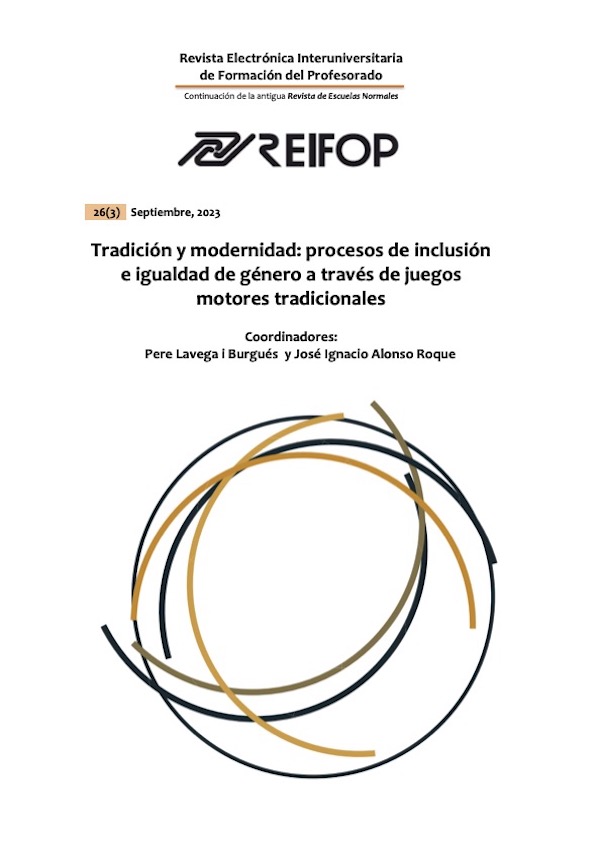Perceptions of self-concept in Obligatory Secondary Education students through artistic mediation
Abstract
The main objective of this Project is to reflect on how the self-concept of students of First year Secondary Education can be developed through artistic mediation. It is a subject that appears transversally in the curriculum but that perhaps it does not get developed enough in the classrooms. To do this, a brief investigation is carried out on the main proposals of experts in the field that support the importance of artistic expression as a way for adolescent to reach a positive integral development. In order to achieve all this, two questionnaires have been developed. One initial before carrying out the activity and another at the end of it. Later a didactic proposal applied in two Secondary Education Centre of the Region of Murcia was designed and executed with a sample of 86 students. This proposal covers the five dimensions of self-concept where students work through artistic practice, which has allowed to know how it has influenced adolescents. The didactic proposal designed to ensure that greater self-confidence of the students are the best results of it.
Downloads
-
Abstract808
-
PDF (Español (España))626
References
Barco, J. M. (2006). Vigostky, las emociones y el arte. Aportes para la educación artística. Praxis pedagógica, 6(7), 70-77.
Barragán Rodríguez, J. M., & Moreno González, A. (2004). Experiencia artística y producción cultura, ámbitos para la intervención socieducativa. Educació Social. Revista d'Intervenció Socioeducativa, 2004, num. 28, p. 19-40.
Fitts, W. H. (1972). The self concept and behavior: Overview and supplement (Vol. 7). Nashville: Dede Wallace Center.
García Barrera, A., Monge López, C. & Gómez Hernández, P. (2021). Percepciones docentes hacia las altas capacidades intelectuales: relaciones con la formación y experiencia previa. Revista Electrónica Interuniversitaria de Formación del Profesorado, 24(1), 239-251.
García, F & Musitu, G. (2014). AF-5 Autoconcepto Forma 5. Madrid, España: TEA
Gardner, H. (1994). Educación artística y desarrollo humano. Barcelona, España: Paidós.
Gardner, H. (1995). Inteligencias Múltiples. La teoría en la práctica. Barcelona, España: Paidós.
González-García. R. (2020). La A/R/Tografía como perspectiva metodológica inicial en programas de mediación artística basados en Arteterapia. Arteterapia. Papeles de arteterapia y educación para inclusión social, 15, 57-65.
Guerrero-Bejarano, Mª. A. (2016). La investigación cualitativa. INNOVA Research Journal, 1(2), 1-9.
López, M., & Martínez, N. (2006). Arteterapia. Conocimiento interior a través de la expresión artística. Tutor Psicología.
López, I., San Pedro, J. y González, C. (2014). La motivación en el área de expresión
plástica. Arte, Individuo y Sociedad, 26 (2), 199-213.
Luna, N. C., & Molero, D. (2013). Revisión teórica sobre el autoconcepto y su importancia en la adolescencia. Revista electrónica de investigación y docencia (REID), (10).
Manrique, I. L., de Mesa, C. G. G., Veledo, B. S. P., & Veledo, J. C. S. P. (2016). Del autoconcepto general al autoconcepto artístico. Magister, 28(1), 42-49.
Marx, R. W., y Wynne, P. H. (1978). Construct interpretations of three self-concept inventories. American Educational Research Journal, 15, 99-108.
McMillan, J. H. y Schumacher, S. (2005). Investigación educativa. Pearson.
Moreno, A. (2016). La mediación artística. Arte para la transformación social, la inclusión social y el desarrollo comunitario. Octaedro.
Mundet Bolós, A., Beltrán Hernández, A. M. y Moreno González, A. (2015). Arte como herramienta social y educativa. Revista Complutense de Educación, 26(2), 315-329. https://doi.org/10.5209/rev_RCED.2015.v26.n2.43060
Díez, J. P. (2004). El autoconcepto en la adolescencia: evaluación, factorización y análisis estructural. Studium: Revista de humanidades, (10), 135-154.
Shavelson, R. J., Huebner, J. J., y Stanton, G. (1976). Self-concept: validation of construct interpretation. Review of Educational research, 407-441.
Vispoel, W. P (1995). Autoconcepto en dominios artísticos: una extensión del modelo de Shavelson, Hubner y Stanton (1976). Revista de psicología de la educación, 87 (1), 134-153.
Los artículos que se publican en esta revista están sujetos a los siguientes términos:
1. El Departamento de Métodos de Investigación y Diagnóstico en Educación de la Universidad de Murcia (España), junto con el Servicio de Publicaciones de la Universitdad de Murcia (Editum) son los editores de la revista REIFOP y conserva los derechos patrimoniales (copyright) de los artículos publicados, permitiendo la reutilización de las mismos bajo la licencia de uso indicada en el punto 2.
2. Las obras se publican en la edición electrónica de la revista bajo una licencia Creative Commons Reconocimiento-NoComercial-SinObraDerivada 3.0 España (texto legal). Se pueden copiar, usar, difundir, transmitir y exponer públicamente, siempre que: i) se cite la autoría y la fuente original de su publicación (revista, editores y URL de la obra); ii) no se usen para fines comerciales; iii) se mencione la existencia y especificaciones de esta licencia de uso.
3. Condiciones de auto-archivo. Se permite y se anima a los autores a difundir electrónicamente las versiones pre-print (versión antes de ser evaluada) y/o post-print (versión evaluada y aceptada para su publicación) de sus obras antes de su publicación, ya que favorece su circulación y difusión más temprana y con ello un posible aumento en su citación y alcance entre la comunidad académica. Color RoMEO: verde.















